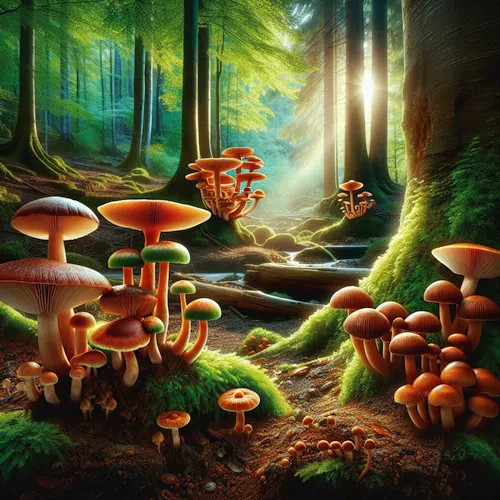The world is teeming with a vast and diverse range of organisms, some visible to the naked eye, others less so. In this intriguing blog, we shall explore mushrooms - these fascinating and under-appreciated elements of the natural world that play pivotal roles in our ecosystems. We’ll examine their various forms, functions, and relationships with other living organisms before delving into their medicinal applications and potential future prospects as valuable sources for scientific research.
A Brief Overview of Mushrooms
Mushrooms (Kingdom: Fungi) are multicellular, spore-producing thalloid outgrowths that typically have a stem (gill, tubes or pores), a cap, and a complex mycelium. Despite their humble appearances, mushrooms exhibit remarkable biochemical complexities, providing vital ecological services within the realm of symbiosis.
The Ecology of Mushrooms
Mushroom species are intimately associated with other life forms in various ways. They engage in mycorrhizal relationships, a mutually beneficial partnership between fungi and plant roots. The fungal hyphae envelop the plant’s roots, facilitating the absorption of nutrients, particularly phosphorus and nitrogen, from the soil while offering protection against pathogens.
Furthermore, many mushrooms play essential roles in recycling dead organic matter, aiding decomposition, and releasing vital nutrients back into the ecosystem - thus earning their title as the “recyclers of the forest.”
Mushroom Medicines: A Glimpse Into Ancient Wisdom
For thousands of years, cultures worldwide have harnessed the therapeutic potential of mushrooms. In traditional Chinese medicine, certain varieties are revered for their immunostimulatory and antiviral properties, while Western societies have recently discovered the value of some fungal compounds in addressing modern-day health challenges, such as cancer treatment.
Fascinating Fungi Research: Pushing the Limits of Our Knowledge
Current research efforts are exploring new avenues in mushroom biology that hold promising prospects for medical advancements. Some fungi contain unique bioactive compounds exhibiting antimicrobial, anti-inflammatory, and antitumor properties - characteristics that researchers worldwide are keen to harness for medicinal use. Moreover, ongoing studies seek to elucidate the intricate networks that govern fungal interactions in nature and unravel how we can optimize these relationships to boost ecosystem resilience and promote sustainable agricultural practices.
In conclusion, mushrooms embody a microcosm of untapped potential - offering a multitude of benefits to humans and their environment alike. With ongoing research and a greater understanding of fungal biology, this enigmatic kingdom could serve as the cornerstone of future medical discoveries and ecological solutions. As we uncover the secrets hidden within their myriad forms and functions, let us remember that our relationship with these silent guardians of nature is one rooted in mutual benefit and symbiotic partnerships - a testament to the complex and delicate balance inherent to life on Earth
